Using tap water for your plants? Here are your best chemical and mechanical options for removing the chlorine and chloramines that can harm your soil microbiology.
Is Tap Water Safe for Plants?
I understand the frustration that gardeners experience when they are forced to use tap water for plants. For most of my gardening life, I have been on municipal water.
It is true that plants don’t seem to like it. However, when I moved to a residence that had well water, I did not notice any difference in my garden.
Why Plants Love Rainwater
Most gardeners have noticed that plants love rainwater. Not only does rainwater contain dissolved nitrogen, but it is free of the minerals and salts that water picks up when filtering through the earth. It also lacks the chemicals that tap water contains, such as chlorine and fluoride, and—perhaps most importantly—it is generally more acidic than tap water, which makes it easier for plants to absorb.1)https://modernsteader.com/rainwater-tap-water2)http://www.strategiesonline.net/rainwater-tap-water-difference
You May Also Enjoy:
“7 Keys to Good Water Management in the Organic Garden”
“Mycorrhizael Inoculant: A Powerful Solution to the Organic Gardener’s Catch-22”
“5 Reasons Your Green Beans Are Thriving (When Nothing Else Is)”
Another idea that’s interesting to toss around involves the potential energy in rainwater. During the water cycle, water gains potential energy when the sun causes it to evaporate. Although it loses a lot of that energy due to friction after the re-formed raindrops fall through air back to earth, some of the energy does remain in the droplets once they hit the ground.3)http://large.stanford.edu/courses/2010/ph240/harting2 Maybe that added energy is part of the reason we see our plants spring up after a good rain?
We can find ways to improve tap water to make it safer for our plants—but can we replicate the magic of rainwater, with its dissolved nitrogen, more plant-friendly pH, and potential energy? That’s a tall order! Let’s look at all of our options, because when rainwater is not available, many of us are stuck with the damaged, chemical-laden water that flows from the tap.
The Chemicals Used to Treat Tap Water
Let’s address the chemicals first. While old-fashioned chlorine can be dissipated out of water with air contact, the process of doing so is burdensome for the average gardener. To make matters worse, in recent years many water treatment facilities have switched to chloramines rather than chlorine.
What are chloramines, you ask?
When water is treated with both chlorine and ammonia, the chlorine is converted to chloramines, in a process known as chloramination. This process came into use because small amounts of plant material containing phenols are present in the water, and when chlorine alone is used for disinfection, these phenols bond with the chlorine to produce chlorophenols, which taste and smell bad.
So the change to chloramines was really done to eliminate the foul taste and odor of chlorophenols. If chlorine could be converted to a less active form after being used to disinfect water in a treatment plant, then it could still retain some of its disinfecting power, without being strong enough to form chlorophenols during its trip through the water mains. And the customer would not experience the off taste and odor of chlorophenols. This is where the ammonia came in, and chloramines were born in our water supply.
You May Also Enjoy:
“11 Irrigation Techniques for a Happy Garden”
Chlorine also has reactions with other organics found in surface water that are introduced by decaying vegetation.
These decay products, mostly humic and fulvic acids, combine with chlorine to produce a family of chemicals known as trihalomethanes (THMs). THMs are widely thought to be carcinogenic. Today’s federal and state drinking water regulations strictly dictate the allowable concentrations of THMs. As a result of this, many more water authorities have switched to chloramination in recent years.
How Tap Water Affects Your Garden
Research studies have shown that when you irrigate your garden plants with tap water, the damage done to microorganisms in the soil is minimal and temporary.
One reason chlorinated water has little impact is that chlorine binds to soil particle surfaces. This immobilizes chlorine and reduces its ability to kill microorganisms. The organisms in the top surface of soil or compost may be affected after irrigation, but as the water moves downward, little chlorine remains.
In one study, researchers found that water chlorinated at 5 parts per million (a much stronger concentration of chlorine than is usually present in tap water) killed organisms only in the top 1/2 inch of soil. Organisms deeper than 1/2 inch were still thriving. In order to kill soil microorganisms to a soil depth of 6 inches, water containing 65 ppm chlorine was required in one study.
You May Also Enjoy:
“At-Home Soil Test Kits: How to Use Them . . . And Why You Should”
The study that came to these conclusions used poor sandy soil with no added organic material other than minimal grass clippings, because they were trying to replicate home lawn care conditions. These soil conditions would not have the level of microbial activity that an organic vegetable garden would enjoy.
(I have not yet been able to determine how long it takes for the microbial communities to regenerate. “Rapid” could mean an hour, or a day, or longer. During a very hot and dry summer when we might water every one or two days, the degradation rate and regeneration rate would be important!)
Finally, it is important to note that it is the microbes in the soil that break down the chlorine and the ammonia.
The more life that is in the soil, the more quickly the unwanted chemicals will clear up. This shows that keeping your soil rich and full of organic matter is very important if you must use tap water to irrigate.
So now let’s look at just how practical the removal of chloramines really is.
Removing Chlorine With Chemicals
In the water industry, the most common methods of dechlorination are the addition of “reducing agents” such as hydrogen peroxide and ascorbic acid (vitamin C). Some water treatment facilities use other chemicals, such as sulfites and even additional chlorine. Most of these techniques are not practical for many gardeners, but let’s evaluate H2O2—hydrogen peroxide.
Hydrogen Peroxide
Hydrogen peroxide is a powerful oxidizer.
It is also versatile. The fact that hydrogen peroxide is used for seemingly contradictory applications proves its versatility.
For example, it can be used to inhibit microbial growth, as in the bio-fouling of water circuits; and it can be used to encourage microbial growth, as in the bioremediation of contaminated groundwaters and soils. It can treat easily oxidized pollutants like iron and sulfides, and difficult-to-oxidize pollutants like solvents, gasoline, and pesticides.
The reason hydrogen peroxide can be used for such diverse applications is that there are different ways its power can be directed; this is called “selectivity.” By simply adjusting the conditions of the reaction—such as pH, temperature, or dosage—a variety of results can be achieved.
For backyard gardening purposes, a simple chlorine test demonstrates the rapid destruction of free available chlorine by hydrogen peroxide.
The correct amount of hydrogen peroxide to use is approximately one or two drops per gallon, using a 3% hydrogen peroxide solution available in drugstores.
The free chlorine will have disappeared by the time you have finished stirring the water. The presence of excess hydrogen peroxide used in this test is not harmful to soil life, so exact amounts and exact pH of the water should not be important.
Ascorbic Acid
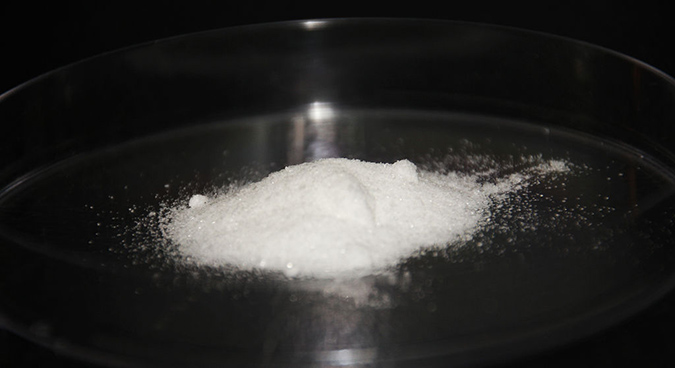
LHcheM, CC BY-SA 3.0, via Wikimedia Commons
What about the use of ascorbic acid? This formula is from a municipal water department: “1000 mg of vitamin C tablets purchased from a grocery store, crushed and mixed with bathwater, removes chloramine completely in a medium-size bathtub without significantly depressing pH.” There are shower attachments available that use ascorbic acid to remove chloramine.
One of these attachments could be attached to a garden hose with a simple adapter. The duration of effective chloramine removal may be shorter than the product claims, so it might be a good idea to periodically test the treated water using a chlorine test strip.
In my experience, in-line filters and attachments are best attached at the source end of the hose, not at the end you hold. These parts are bulky and they can make it harder for you to water your garden.
Removing Chlorine With Filters
Home chlorine removal systems mostly use activated carbon filters. These filters and their systems vary widely in size and price. The small ones are designed for showers or drinking water, and many of these would be easily adaptable to a garden hose.
The inherent problem with the small filters is their correspondingly low flow rate. Most drinking water filters are designed to function with a low volume flow rate.
You May Also Enjoy:
“How NOT To Water Your Garden”
“The #1 Tool for Organic Growers”
“Clay, Sand, Silt, or Loam? Discover Your Garden’s Soil Texture In 5 Easy Steps”
Shower filters are notorious for reducing, not eliminating, the chemicals they are designed to filter. There is one filter I have used that removes chlorine to undetectable levels and has a good flow rate. The Omica shower filter uses some cutting-edge technologies and has good coverage of other water toxins as well.
Depending on the size of your garden, an inexpensive whole house filter may be of interest to you.
I have been looking at water filtration systems for a long time and I recently found a 2-stage system for about $300. The 2-stage system saves on filter replacement, because the sediment filter prevents the carbon filter from blocking up too quickly.
Effective Microorganisms
There is a newer technology called Effective Microorganisms (EM) that is already being used in more than 100 countries for a broad variety of applications. The technology was developed by a university professor in the early 1980’s.
EM ceramics can be used with drinking water to remove chlorine, control odors, make water more hydrating for plants and animals, and improve water for homeopathic use. The 35 mm pipes are used in a bath or shower to improve cleansing and reduce soap consumption.
The pipes can also be used with the water you will use for your plants. One pipe will remove all chlorine from 55 gallons of water in 30 minutes. Several pipes can be placed inside a water line to create your own water structuring unit to improve the water and reduce chlorine. The pipes do not wear out or get used up, but they do need to be cleaned and recharged with microbes every 6 months.
What Do You Think?
What about you? If you use tap water to water your garden, do you treat it first? How do you ensure your tap water is safe for plants? Let us know in the comments!
_____________________
This is an updated version of an article by Leslie Parsons that was originally published on March 9, 2015.
The Grow Network is a participant in the Amazon Services LLC Associates Program, an affiliate program designed to provide a means for our team to earn fees for recommending our favorite products! We may earn a small commission, at no additional cost to you, should you purchase an item after clicking one of our links. Thanks for supporting TGN!
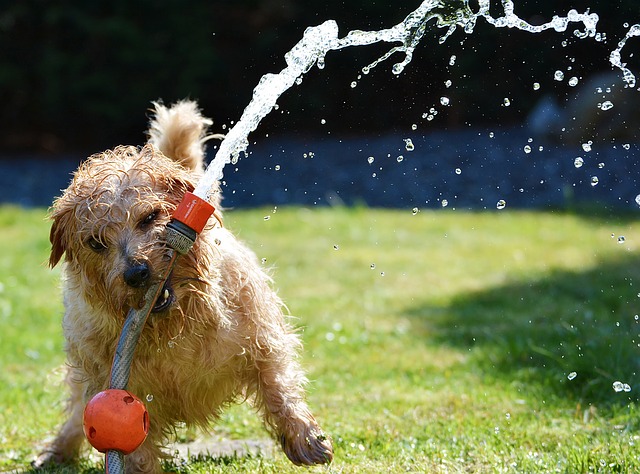
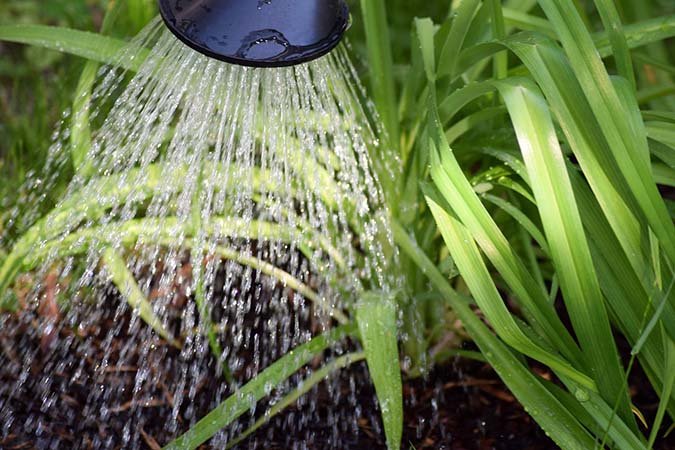
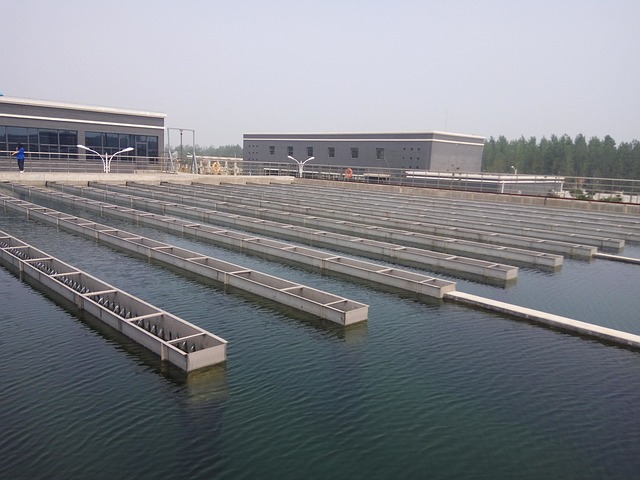
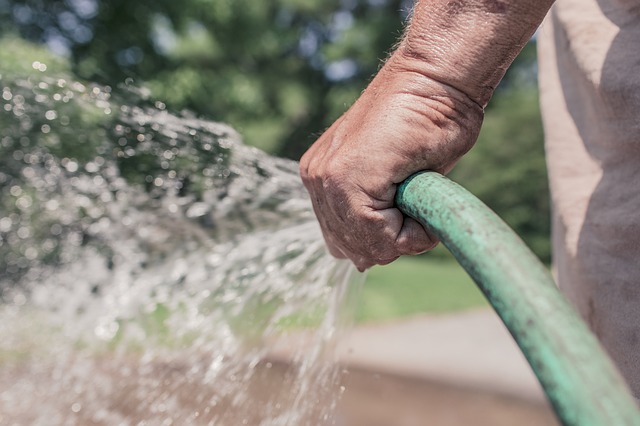
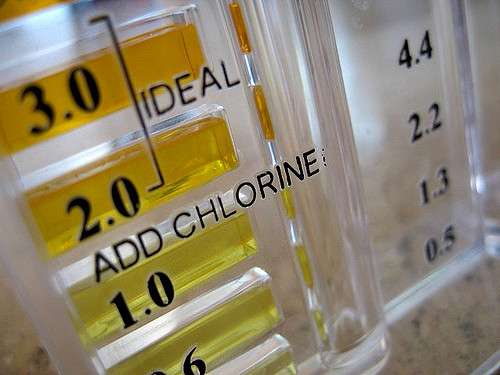







COMMENTS(12)
A good explanation of a good idea
Great article–very helpful.
Another option is using water filters to remove most of the Chlorine.
Good info. We are fortunate to be on well water. I have noticed a vast improvement in the overall health of my house plants since we moved out of the city and no longer use treated water.
It’s sad that also rainwater isn’t any more what it used to be. It now contains a lot of stuff, e.g., glyphosate and other ‘air-born’ contaminants incl those from above, i.e., those used for climate modification/solar radiation management such as aluminum/barium/strontium etc.- http://www.GeoengineeringWatch.org is a good source of updated information on this scary stuff that affects us all. They also keep track of global rain water analysis data that show these heavy metals.. Unfortunately, the US (and other?) government/s seem not to be interested in checking or reporting on these levels.
We now live enough off grid in a wetlands area that we were not permitted to drill anything more than a hand-pump well. My husband, who used to be a wastewater treatment plant operator, loves our well water, but it is a little too acidic and heavy in minerals for me, so it was interesting to consider the strategies n the article in terms of what we could do with our water. We have near-enough access to an artesian spring, which is what I grew up on, and it beats every other filter we tried while urban hands down. My digestion, hydration and skin health are now in great shape! One project that is up the road for us is to install a spring box, a technique that might work in an urban water system. It consists of several layers of gravel, sand, fine sand and possibly other minerals that simulate the natural filtering process that result in spring water. The spring box can be used to sanitize or to an extent demineralize groundwater. When done properly, it will take the ambient water supply to spring water quality, or near to it. Urban filters could contain a set of prefilters for some of the water treatment chemicals listed in this article. Some municipalities can be very fussy about how water is used and treated in the city limits, so a discreet check of local regulations and respectful compliance with them is probably a good idea. I’m forwarding this article to my city friends, and know it will do them a lot of good!
Berkey type filters would remove minerals for water you drink.
Our well water is heavy with arsenic. P
Can you please give me some guidance for how to counter this arsenic abundance. We bring in drinking water from another location. But I wouldn’t be able to do this with garden water. RainwTer is far too scarce in this lication. Thanks if you can help.
Common in the western U.S. I got a letter from President Bush saying ‘this is your only warning, use your well water at your own risk because of runoff from old mines.
This is very useful information.